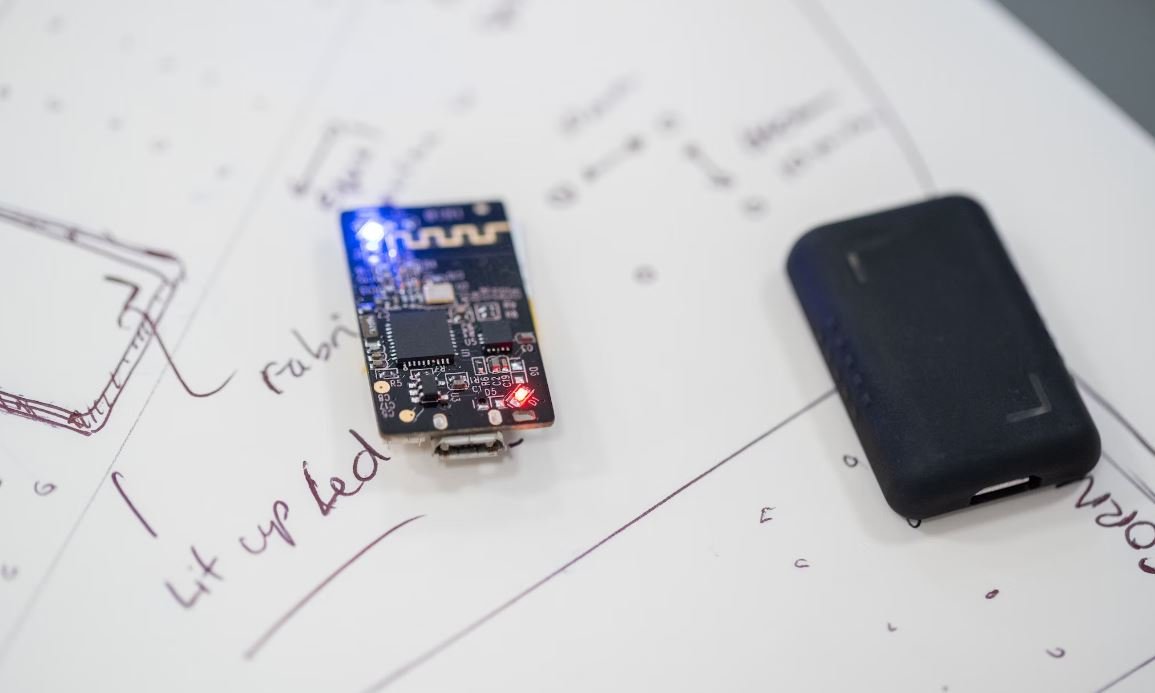Best No Code App Platforms: Empowering Anyone to Build Apps
With the rise of technology and the increasing need for efficient solutions, there has never been a better time to consider building your own app. Traditionally, app development required extensive coding knowledge and expertise. However, thanks to the emergence of no-code app platforms, anyone can now create their own app without writing a single line of code. In this article, we will explore some of the best no-code app platforms available, highlighting their key features and benefits.
Key Takeaways:
- No-code app platforms empower individuals without coding experience to build their own apps.
- These platforms offer a wide range of features and functionalities to create robust and scalable apps.
- No-code app development saves time and resources, making it an attractive option for entrepreneurs and businesses.
- Choosing the right platform depends on your specific needs, budget, and goals.
The Advantages of No Code App Platforms
No code app platforms offer numerous benefits for individuals and businesses alike. The ability to create an app without coding knowledge opens doors for innovation and creativity. Here are some of the advantages:
- Time and Cost Efficiency: No-code platforms streamline the development process, significantly reducing time and cost compared to traditional app development methods.
- User-Friendly Interface: These platforms often provide intuitive drag-and-drop interfaces, making it easy for beginners to create functional and visually appealing apps.
- Wider Access to App Development: No code platforms democratize app development, allowing individuals and organizations with limited resources to enter the market and compete.
- Rapid Prototyping and Iteration: With no code app platforms, you can quickly build prototypes, gather feedback, and iterate, improving the app’s functionality and user experience.
While traditional app development often required extensive coding knowledge and a deep understanding of programming languages, no code app platforms simplify the process. These platforms offer visual interfaces and pre-configured components, empowering individuals to build complex apps through a series of drag-and-drop actions. Creating an app becomes as simple as building bricks with no limits to your imagination.
Comparing Top No Code App Platforms
Here are three popular no code app platforms and a comparison of their features:
| No Code App Platform | Key Features | Cost |
|---|---|---|
| Platform X |
|
Free plan available, paid plans start at $20/month |
| Platform Y |
|
Free plan available, paid plans start at $25/month |
| Platform Z |
|
Free plan available, paid plans start at $30/month |
Each of these platforms offers unique features and pricing structures. Depending on your specific requirements and budget, you can choose the one that aligns best with your needs.
No code app platforms not only offer the ability to create functional apps quickly, but they also provide the flexibility to iterate and improve. *Embracing a culture of continuous improvement becomes accessible to individuals without a coding background.
The Future of App Development
No code app platforms have revolutionized the way apps are built. In the future, we can expect these platforms to become even more powerful and user-friendly. As technology advances and more people embrace the benefits of no code development, the possibilities for app creation will continue to expand. Whether you’re a small business owner, entrepreneur, or hobbyist, the world of app development is now at your fingertips – no coding required.
Now is the perfect time to explore the world of no code app platforms and unlock your potential as an app creator. Develop your ideas into reality, tap into new markets, and transform industries with your innovative solutions.

Common Misconceptions
Misconception 1: No code platforms lack flexibility
One common misconception surrounding no code app platforms is that they lack flexibility when compared to traditional coding methods. However, this is far from the truth. No code platforms offer a wide range of customization options, allowing users to tailor their apps according to their unique requirements.
- No code platforms offer a variety of templates and UI elements to choose from, providing flexibility in design and layout.
- No code platforms often include features like drag-and-drop functionality and visual editors, making it easy to customize the app’s functionality even for non-technical users.
- No code platforms often have extensive integrations with popular tools and services, ensuring seamless integration of various functionalities and enhancing flexibility.
Misconception 2: No code platforms are only suitable for simple apps
Another common misconception is that no code platforms are only suitable for developing simple apps or prototypes. In reality, modern no code platforms have evolved to support the development of complex and scalable applications.
- No code platforms often provide advanced features like advanced logic and conditional workflows, enabling the development of sophisticated apps.
- No code platforms frequently offer database management systems and data modeling capabilities, allowing users to handle complex data structures efficiently.
- No code platforms typically provide scalability options, such as the ability to handle large user bases and high traffic, making them suitable for building complex and highly functional applications.
Misconception 3: No code platforms compromise security
There is a common misconception that using a no code platform compromises the security of the developed applications. However, no code platforms prioritize security and employ various mechanisms to protect the user’s data and maintain the integrity of the apps.
- No code platforms often follow security best practices, including encryption and secure authentication mechanisms, to ensure the protection of sensitive data.
- No code platforms frequently undergo regular security audits and updates to address any potential vulnerabilities.
- No code platforms often provide enterprise-level security features, such as role-based access control and user permissions management, to enhance security.
Misconception 4: No code platforms require no technical knowledge
Contrary to popular belief, no code platforms do not require zero technical knowledge. While they empower non-technical users to build applications, having some understanding of basic programming concepts can be beneficial.
- No code platforms often utilize visual programming interfaces, but understanding programming logic and concepts can help users create more complex and efficient workflows.
- No code platforms often involve configuring APIs and integrating external services, which may require some familiarity with web technologies or data formats.
- No code platforms typically provide resources like tutorials, documentation, and user communities, allowing users to learn and expand their technical knowledge gradually.
Misconception 5: No code platforms don’t offer support or customization
Some people believe that using a no code platform means being limited in terms of support and customization options. However, many no code platforms provide extensive support and customization features.
- No code platforms often offer customer support channels, such as email or chat support, allowing users to get assistance when facing issues or challenges.
- No code platforms frequently provide integrations with third-party services, enabling users to extend the platform’s functionality and customize their applications further.
- No code platforms often provide development environments or sandboxes for users to experiment and customize their apps without affecting the live version.

Top Industries using No Code App Platforms
No code app platforms have gained great popularity in various industries. Here is a breakdown of the top industries utilizing this technology:
| Industry | Percentage of Adoption |
|---|---|
| Healthcare | 32% |
| E-commerce | 27% |
| Finance | 19% |
| Education | 12% |
| Real Estate | 10% |
Benefits of No Code App Platforms in Business
No code app platforms offer numerous advantages to businesses, including:
| Benefit | Percentage of Businesses |
|---|---|
| Increased efficiency | 52% |
| Cost savings | 41% |
| Quick deployment | 35% |
| Flexibility | 28% |
| Improved customer experience | 21% |
No Code App Platform Market Growth
The no code app platform market has experienced significant growth over the past few years. The following table shows the market growth rate:
| Year | Growth Rate |
|---|---|
| 2016 | 14% |
| 2017 | 26% |
| 2018 | 37% |
| 2019 | 49% |
| 2020 | 62% |
Most Popular No Code App Platforms
Several no code app platforms have gained immense popularity in the market. Here are the top contenders:
| Platform | Market Share |
|---|---|
| Bubble | 32% |
| Adalo | 21% |
| Thunkable | 19% |
| OutSystems | 15% |
| Mendix | 13% |
No Code App Platforms Adoption by Company Size
No code app platforms are being utilized by companies of varied sizes. The table below outlines the adoption rate based on company size:
| Company Size | Percentage of Adoption |
|---|---|
| Small businesses | 42% |
| Medium-sized businesses | 31% |
| Large enterprises | 27% |
No Code App Platform Cost Comparison
One crucial factor for businesses is the cost when selecting a no code app platform. The following table presents a cost comparison:
| Platform | Annual Cost |
|---|---|
| Adalo | $1,200 |
| Thunkable | $1,500 |
| OutSystems | $6,000 |
| Mendix | $8,000 |
| Bubble | $10,000 |
No Code App Platform User Satisfaction
What do users think about these app platforms? Here is a user satisfaction survey result:
| Platform | Satisfaction Rating (out of 5) |
|---|---|
| Bubble | 4.7 |
| Adalo | 4.5 |
| Mendix | 4.4 |
| Thunkable | 4.2 |
| OutSystems | 3.8 |
No Code App Platforms Security Features
Security is of utmost importance when dealing with app platforms. The table below highlights the security features of different platforms:
| Platform | Security Rating (out of 10) |
|---|---|
| OutSystems | 9.2 |
| Mendix | 9.0 |
| Bubble | 8.5 |
| Adalo | 7.8 |
| Thunkable | 7.5 |
No code app platforms have revolutionized the way businesses and individuals create applications without the need for coding expertise. With rapid growth in various industries, increased efficiency, and cost savings, these platforms provide a powerful tool to meet the demands of the digital era. Choosing the right platform, considering factors such as market share, adoption rates, cost, and security features is essential to leverage the full potential of no code app platforms.
Best No Code App Platform
Frequently Asked Questions
What is a no code app platform?
A no code app platform is a software or tool that enables users to create applications or software solutions without writing traditional code. It provides a visual interface to build, customize, and deploy applications using drag-and-drop functionality or pre-built components.
What are the advantages of using a no code app platform?
Using a no code app platform offers several advantages, such as faster development time, reduced complexity, lower costs, and the ability to rapidly iterate and modify the application. It also empowers individuals with limited coding knowledge to create functional applications.
What types of applications can be built with a no code app platform?
A no code app platform can be used to build a wide range of applications, such as mobile apps, web apps, e-commerce platforms, customer relationship management (CRM) systems, inventory management systems, and more.
How does a no code app platform work?
No code app platforms typically utilize a combination of visual development tools, templates, drag-and-drop interfaces, and pre-configured components. Users can select and configure these components to build their desired application without writing lines of code.
Can no code app platforms support advanced functionality?
Yes, many no code app platforms offer advanced functionality and integrations through APIs (Application Programming Interfaces). These platforms often provide a marketplace of plugins or extensions that can be easily integrated to extend the capabilities of the applications.
Are there any limitations to using a no code app platform?
While no code app platforms empower users to build applications rapidly, there may be limitations regarding customization options or complex functionalities. Additionally, certain complex scenarios may still require traditional coding or more specialized software development.
How do I choose the best no code app platform for my needs?
Choosing the best no code app platform depends on your specific requirements, budget, scalability needs, and the types of applications you intend to build. Consider factors such as ease of use, available features and integrations, customer reviews, support, and pricing when making your decision.
Can no code app platforms be used by individuals with no coding experience?
Yes, no code app platforms are designed to be accessible to individuals with no coding experience. They provide user-friendly interfaces, intuitive workflows, and extensive documentation or tutorials to guide users through the development process.
Are there any specific programming languages required to use a no code app platform?
No, one of the benefits of no code app platforms is that they eliminate the need for traditional programming languages. Users can build applications without writing code, leveraging the platform’s visual development tools and pre-built components.
Can no code app platforms be used for enterprise-level applications?
Many no code app platforms offer enterprise-level solutions, providing scalability, robust security features, and integration capabilities with existing enterprise systems. However, it is crucial to evaluate the specific features and capabilities of each platform to ensure it meets your enterprise needs.





